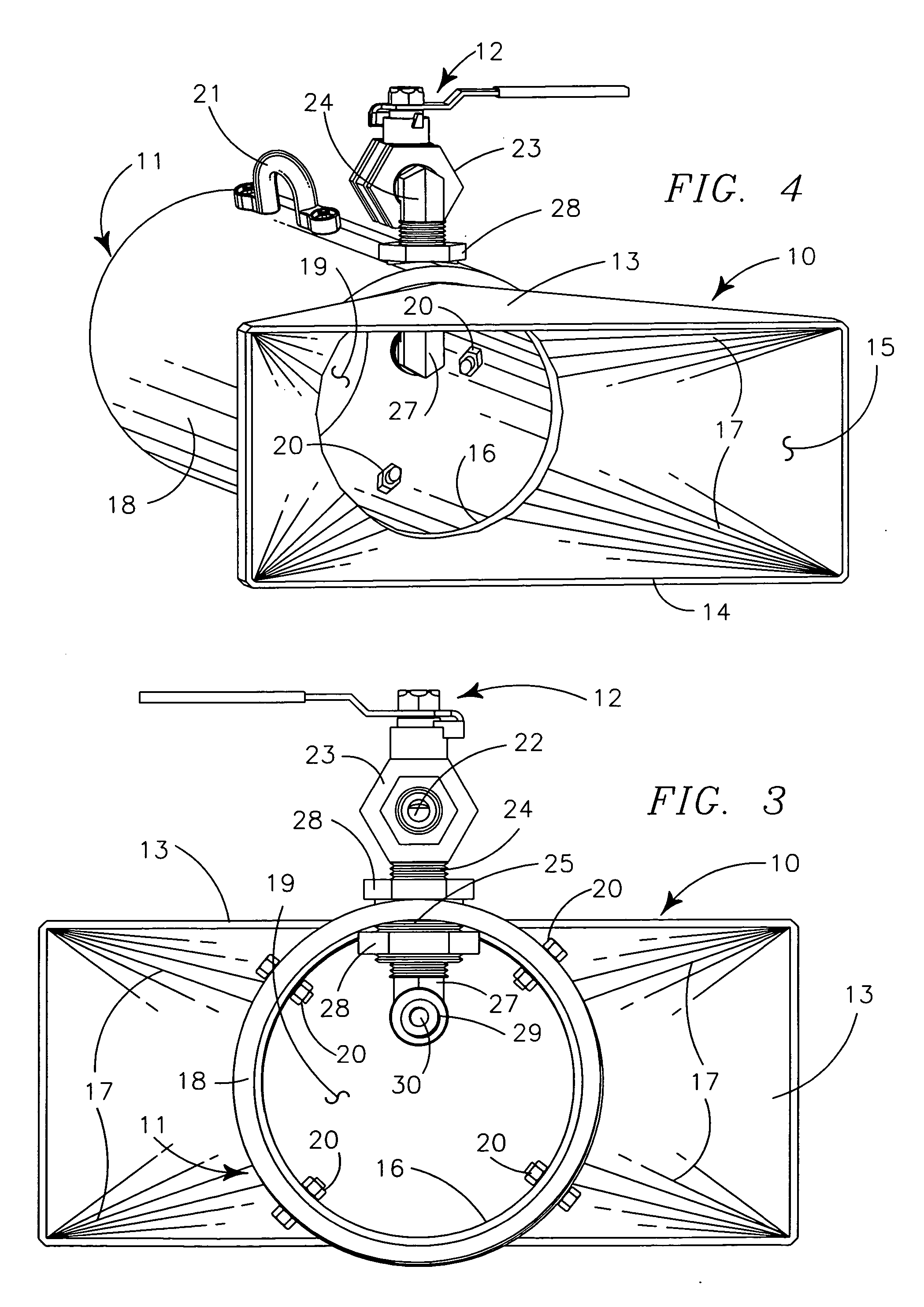Portable ventilator for work station
a ventilator and work station technology, applied in ventilation systems, domestic stoves or ranges, heating types, etc., can solve the problems of affecting creating more complex problems, and presenting particular problems in the welding process, so as to improve the efficiency of airflow, improve the efficiency of ventilation, and promote the flow through the effect of streamlined flow
- Summary
- Abstract
- Description
- Claims
- Application Information
AI Technical Summary
Benefits of technology
Problems solved by technology
Method used
Image
Examples
Embodiment Construction
[0035]My portable ventilator generally provides collection head 10 carried by dispersement tube 11 and operated by pressurized air powering structure 12.
[0036]Collection head 10 is a peripherally defined funnel-like structure 13 having areally larger rectangular rearward entry orifice structure 14 communicating by internal channel 15 to areally smaller circular forward output orifice structure 16. Preferably the funnel-like structure 13 is formed with rounded edges 17 to make a smooth transition from the linear corner edges of entry orifice 14 to the rounded edges of output orifice 16, as illustrated, so that internal channel 15 of funnel-like structure 13 is reasonably streamlined to lower fluid friction and prevent air stream curl in gasses passing through the internal channel 15. Preferably the funnel-like structure 13 is formed of thermally resistant metal to provide strength and durability and to prevent damage to the structure from hot metallic globules or other welding debris...
PUM
 Login to View More
Login to View More Abstract
Description
Claims
Application Information
 Login to View More
Login to View More - R&D
- Intellectual Property
- Life Sciences
- Materials
- Tech Scout
- Unparalleled Data Quality
- Higher Quality Content
- 60% Fewer Hallucinations
Browse by: Latest US Patents, China's latest patents, Technical Efficacy Thesaurus, Application Domain, Technology Topic, Popular Technical Reports.
© 2025 PatSnap. All rights reserved.Legal|Privacy policy|Modern Slavery Act Transparency Statement|Sitemap|About US| Contact US: help@patsnap.com



